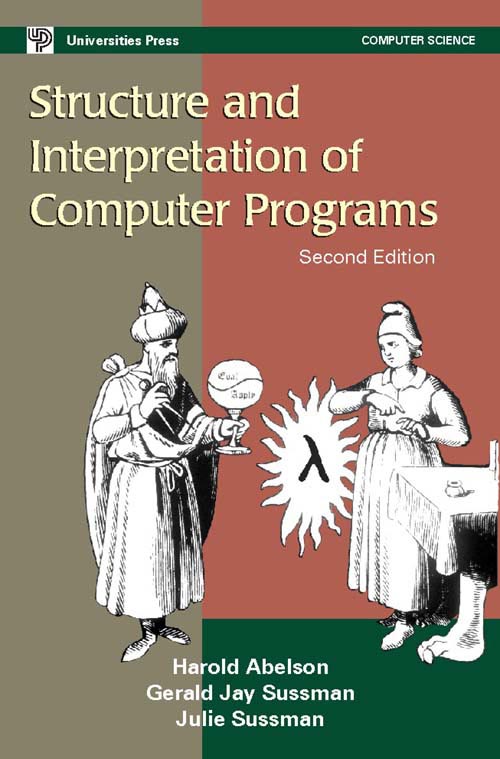정글 알고리즘 1강

Structure and Interpretation of Computer Programs (컴퓨터 프로그램의 구조와 해석)
내용 중 일부
프로그래밍의 요소(Element of Programming)
| 기본 표현식 (primitivie expression) | 언어가 다루는 가장 단순한 요소 (which represent the simplest entities the language is concerned with) |
| 결합 수단 (means of combination) | 단순한 요소들을 결합하여 복합적인 요소를 만드는 방법 (by which compound elements are built from simpler ones, and) |
| 추상화 수단 (means of abstraction) | 복합 요소에 이름을 붙이고, 그것을 하나의 단위로써 다룰 수 있게 해주는 방법 (by which compound elements can be named and manipulated as units) |
추상화가 무엇인가 -> 복합 요소의 이름을 지정하고 단위로 조작할 수 있는 것
(means of abstraction, by which compound elements can be named and manipulated as units)
추상화를 해서 써야 한다 -> 재사용성이 좋아짐
Substitution Model (치환 모델)
Applicative Order Evaluation (C, C++, Java, Python 등)
인자를 먼저 계산한 뒤, 함수 본문에 치환하여 실행
def f(a):
return sum_of_square(a+1, a*2)
def sum_of_squares(x,y):
return square(x) + square(y)
def square(x):
return x * x
Normal Order Evaluation (Haskell이나 일부 LISP 시스템)
함수 본문에서 실제로 필요한 시점까지 인자 평가를 미룸
def p():
while true:
pass
def test(x, y):
return 0 if x == 0 else y
test(0, p())
test(0, p())에서 무한 루프로 빠지지 않고 0을 리턴 하는 이유 -> Normal Order Evaluation
필요할때까지 매개 변수 계산을 미룸
재귀 (Recursion)
recursion은 사람의 생각대로 자연스럽게 쓰는 방식
0부터 10까지 더하는 함수를 재귀로 표현
def nsum(n):
if n == 0:
return 0
return n + nsum(n-1)
print(nsum(10))
0부터 10까지 더하는 함수를 꼬리 재귀로 표현
def exp_iter(n, total):
if n == 0:
return total
else:
return exp_iter(n-1, total+n)
def sum(n):
return exp_iter(n, 0)
거듭제곱의 예시
\[b^n = \begin{cases} 1 & \text{if } n = 0 \\ b \times b^{n-1} & \text{if } n > 0 \end{cases}\]# recursion version
def expt(b, n):
if n == 0:
return 1
else:
return b * expt(b, n - 1)
# iteration version
def expt_iter(b, n):
product = 1
for i in range(n):
product *= b
return product
# tail recursion version
def expt_iter(b, counter, product):
if counter == 0:
return product
else:
return expt_iter(b, counter - 1, b * product)
#product = 누적값 = 1
-
꼬리 재귀(Tail Recursion)은 결과값을 누적하며 계산-> 더 빠르게 값을 알 수 있다
-
꼬리 재귀는 for문과 유사하다
-
for문, 재귀, 꼬리 재귀에서 제일 오래 걸리는 것은 일반 재귀 함수이다 (스택으로 인한 오버헤드)
Break the problem into smaller subproblems
재귀는 큰 문제를 작은 문제로 나누고, 그 작은 문제가 자기 자신과 구조가 동일할 때 적용할 수 있는 해결 방법
-
문제 파악: 이 문제를 자기 자신보다 작은 하위 문제로 표현할 수 있는가?
-
기저 조건 정의: 언제 재귀 호출을 멈출 것인가?
-
하위 문제 호출: 더 작은 인풋에 대해 자기 자신을 호출
-
결과 조합: 하위 문제의 결과를 조합하여 전체 문제 해결